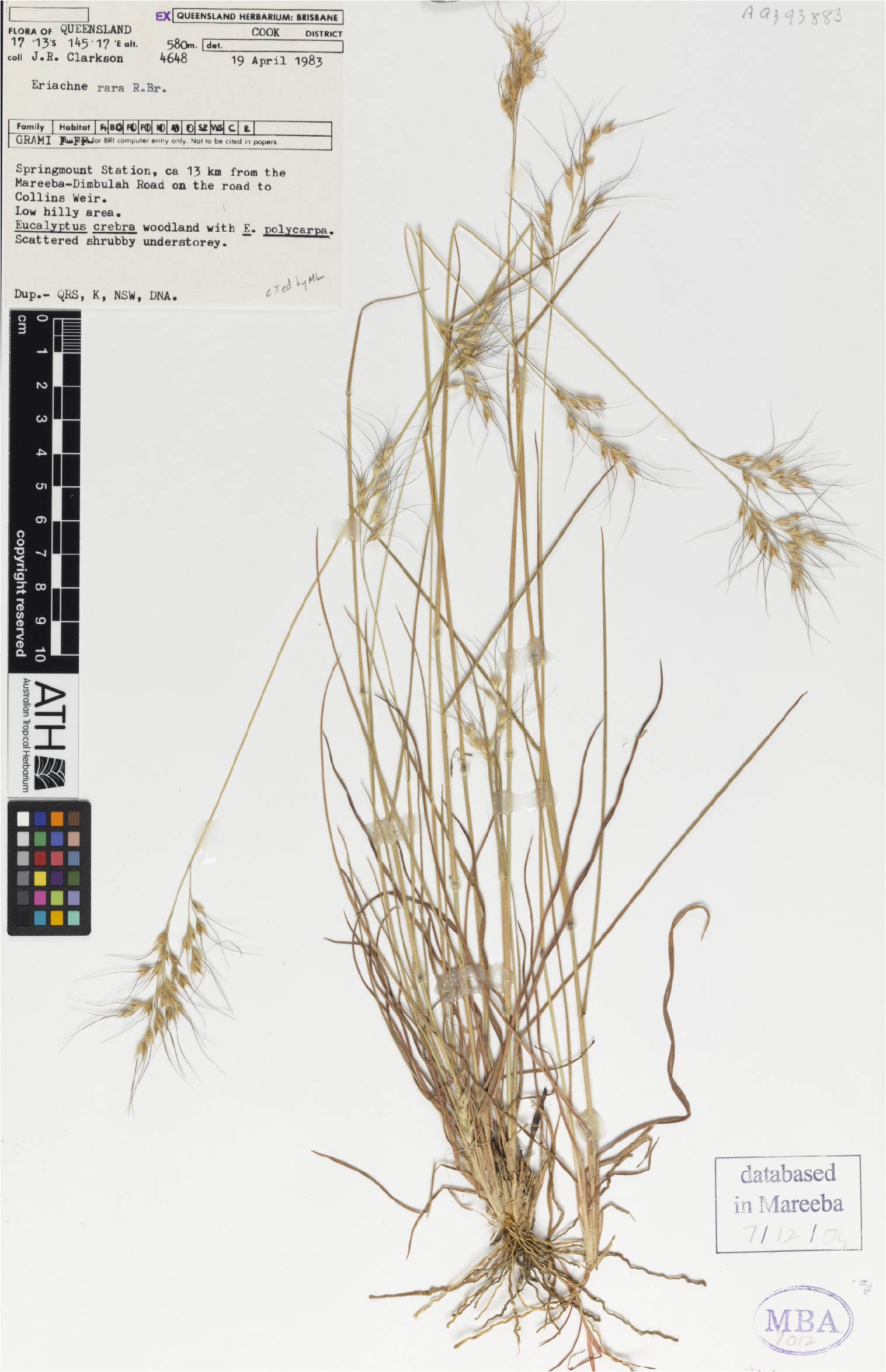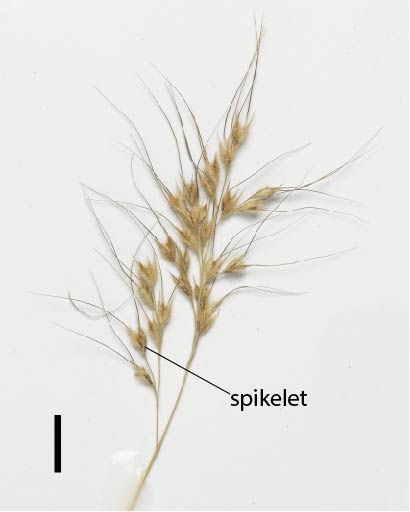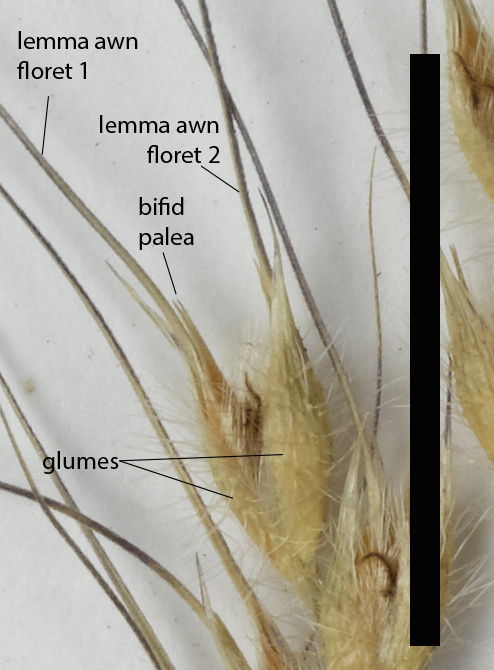Eriachne rara
R.Br.
This species occurs in Cape York Peninsula as an erect short-lived perennial, 16-60 cm high. Stems and leaves are hairy with more or less stiff hairs or sometimes mostly hairless. Leaves are cauline (arising along the stem), blades to 20 cm long and 3 mm wide, the blade bristle-like with margins often rolled inwards (involute) and rough to the touch (Fig. 1). Inflorescences or flowering branches terminate the stem and are well exserted some distance from leaf axils. The inflorescences or flowering branches are open panicles with branches arising along a central stem, panicles are 3.5-10 cm long and 0.5-5 cm wide (Fig. 2). Eriachne rara has spikelets (the basic flowering unit) consisting of two glumes encompassing two bisexual florets (modified flowers) (Fig. 3). The florets are subequal or slightly shorter than the glumes, with the lemma of each floret giving rise to a curved awn 13-30 mm long, the palea of each floret is notched into two awnlets 0.5-2 mm long at apex.
Botanical Description
A short-lived perennial species to 16-60 cm high. The leaves and culms hairy with stiff tubercle-based hairs or sometimes mostly glabrous. Leaf blade to 20 cm long and up to 3 mm wide, setaceous, with margins scabrous. The inflorescences are open panicles, 3.5-10 cm long, 0.5-5 cm wide (Fig. 2). Spikelets are defined by two glumes 5-9 mm long, each tapered into a sharp point which is often split into two awnlets to 2.5 mm long. The glumes encompass two bisexual florets, the florets slightly shorter than or subequal to the glumes, the lemma 3-5 mm long. The lemma of each floret is awned, the lemma awn 13-30 mm long, with the palea of each floret tapered and notched or split into 2 awnlets 0.5-2 mm long, (Fig. 3). The lemma is hairy in lower ¾ with simple hairs usually exceeding the apex, and without grooves, but depressed or shortly grooved at base of awn.
Diagnostic Features
Eriachne rara is one of many species of Eriachne characterised by long awned spikelets, the awns curled, curved or bent. Other long awned species of Eriachne which occur in the region and may be easily confused with this species are E. armittii, E burkittii, E. glauca, E. squarrosa, E. stipacea, and E. vesiculosa. Some of these species are more easily distinguished than others. Most are treated in this guide, however some of the key differences between the species are shown in Table 1. In other regions of Australia e.g. the Northern Territory, additional species may also need to be considered. Eriachne rara is distinguished by the combination of the following characters, a dense covering of hairs, a loose tuberculate hairy panicle, short often red florets, the florets slightly shorter than glumes and the beaked bifid palea. Users are encouraged to consult Lazarides (2005) or Simon & Alfonso (2011) for more detail on distinguishing between these species.
Natural Values
This species is likely to provide seed for granivorous or seed eating animals.
Habitat
This species occurs along the east coast of Australia in New South Wales and Queensland north of 30˚S. Found predominantly on islands and the coastal mainland in deep or shallow sandy or stony soils in association with sandstone, laterite or granite. Also found on slopes, ridges, Melaleuca swamps and seasonal water channels. (Lazarides 2005, Simon 2011).
Land Management Notes
Species of this genus are considered generally to be of low forage value (Lazarides 2002).



Resources
AVH (2017) Australia’s Virtual Herbarium, Council of Heads of Australasian Herbaria, <http://avh.chah.org.au>, accessed 30 May 2017.
Lazarides, M. (1995) The genus Eriachne (Eriachneae, Poaceae). Australian Systematic Botany 8(3): 355-452.
Lazarides, M. (2002) Economic attributes of Australian grasses. Flora of Australia 43: 213-245.
Lazarides, M., Weiller, C.M. & McCusker, A. in Mallett, K. (ed.) (2005) Eriachne. Flora of Australia 44B: 132-175.
Simon, B.K. & Alfonso, Y. (2011) AusGrass2, http://ausgrass2.myspecies.info/accessed on [20 March 2017].

